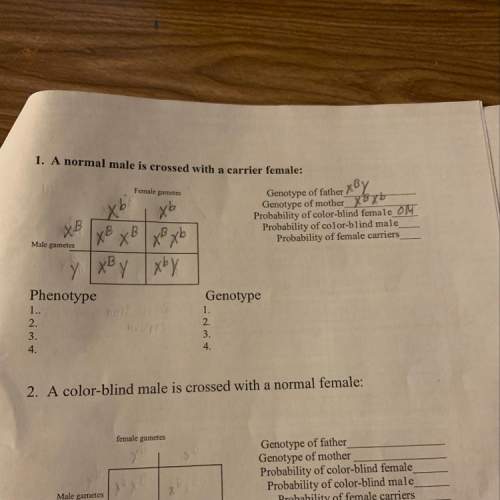
Biology, 01.07.2019 20:00, guitarherolds
How has technology changed farming a)pesticides are no longer used on most farms b)farms produce less food then they used to c) farmers use mechanical devices to do many tasks d)there are a few farmers than there used to be

Answers: 1
Other questions on the subject: Biology

Biology, 21.06.2019 20:00, u8p4
Over the past 60 years, many amphibian species have experienced significant population declines and some species have become extinct. scientists suspected that local human activities such as the destruction of wetlands, regional pollution, and deforestation were the main reasons for these losses. however, research over the past 20 years reveals significant amphibian population declines in protected areas of the world, such as nature preserves and parks. these global declines suggest widespread problems including increased ultraviolet radiation, acid rain, and disease. in switzerland, for example, 14 of the 20 native amphibian species are threatened with extinction. chytridiomycosis is a fungal disease first identified in 1998 as a cause of massive amphibian deaths. in some severely impacted populations, a few individuals have survived, perhaps because of some natural resistance. if these resistant individuals continue to survive and prosper, new resistant populations might emerge. this would be an example of the founder effect artificial selection genetic drift natural selection sexual selection
Answers: 3

Biology, 21.06.2019 21:00, haleylecompte
Name one similarity and one difference between the morphology of a brachiopod and a bivalve
Answers: 1

Biology, 22.06.2019 03:30, pineapplefun
The human genome project is devoted to mapping the general dna sequence of our species. this could lead to the development of new medicines, as well as the possibility of using gene therapy to treat certain diseases. however, there are some ethical issues surrounding the mapping of individual genomes. one concern is a) that your genes may change over time, making the project useless. b) that insurance companies could discriminate based on genetic make-up. c) that since this has never been done before, we should probably not do it now. d) that sequencing our individual genomes is so expensive, it is a counter-productive strategy.
Answers: 1

Biology, 22.06.2019 04:00, zegangke1651
Will mark brainliest i only need the ! 1.use ten beads and a centromere of one color to construct the long chromosome. use ten beads and a centromere of a second color to construct the second chromosome in the long pair. make a drawing of the chromosomes in the space below. 2. for the second pair of chromosomes, use only five beads. 3. now model the replication of the chromosomes. make a drawing of your model in the space below. part b: meiosis i during meiosis i, the cell divides into two diploid daughter cells. 4. pair up the chromosomes to form tetrads. use the longer tetrad to model crossing-over. make a drawing of the tetrads in the space below. 5. line up the tetrads across the center of your “cell.” then model what happens to the chromosomes during anaphase i. 6. divide the cell into two daughter cells. use the space below to make a drawing of the result. part c: meiosis ii during meiosis ii, the daughter cells divide again. 7. line up the chromosomes at the center of the first cell, one above the other. separate the chromatids in each chromosome and move them to opposite sides of the cell. 8. repeat step 7 for the second cell. 9. divide each cell into two daughter cells. use the space below to make a drawing of the four haploid cells
Answers: 1
Do you know the correct answer?
How has technology changed farming a)pesticides are no longer used on most farms b)farms produce l...
Questions in other subjects:


Chemistry, 18.12.2021 09:10

Mathematics, 18.12.2021 09:10




Mathematics, 18.12.2021 09:10



Business, 18.12.2021 09:10







